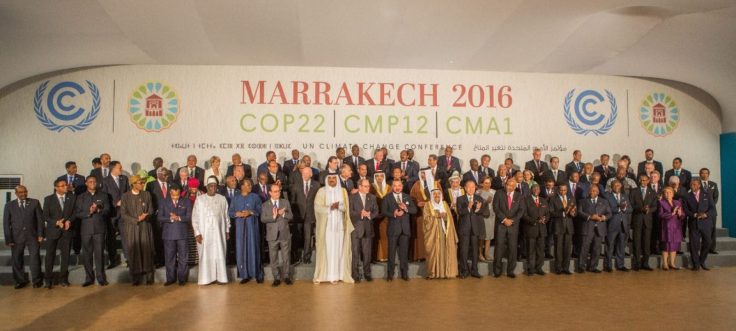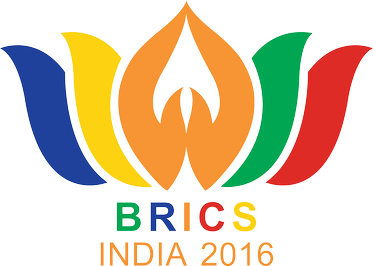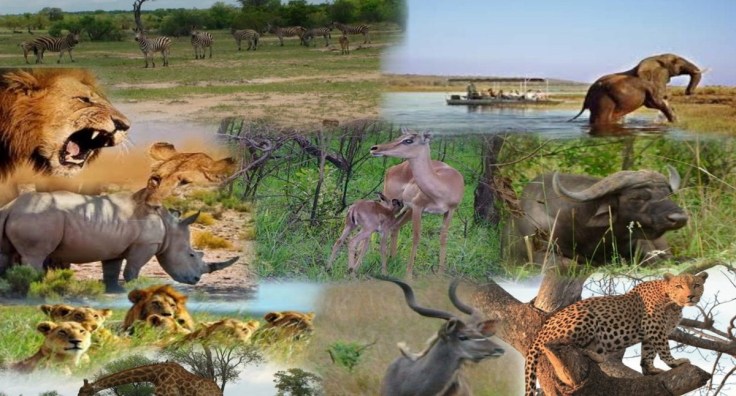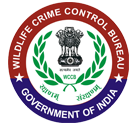
Neeraj Bajpai* 

If Anti-corruption drives, including demonetization of high currency notes, are the center piece of the Narendra Modi Government’s first three years of governance, A slew of initiatives including India’s bold stand in the Paris climate meet, sustained bids to protect flora and fauna and stringent control orders for air and water pollution levels, are among noteworthy foot prints on the environment, forests and climate front.
The government says that it has done massive work during last three years to protect environment while also ensuring that the developmental projects also do not suffer. A right balance has been created between developmental needs of the nation and adequately addressing the environmental concerns.
India participated in COP-22 meeting in Marrakech, Morocco last year. The main thrust of COP 22 was to develop rules for operationalizing the Paris agreement and advance work on Pre-2020 actions.

India, led by its Environment, Forest and Climate Change Minister Anil Madhav Dave, participated constructively and in association with other developing countries, ensured that climate actions are based on the principles of equity and Common but Differentiated Responsibilities (CBDR) and climate justice. The Marrakech Action Proclamation for climate and sustainable development captures the sense of urgency to take action on climate change, while ensuring sustainable development.
Signing ceremony of Framework Agreement on International Solar Alliance also took place at COP-22. COP-22 concluded on November 20, 2016.
India has committed to reduce Green House Gas (GHG) emissions intensity of its Gross Domestic Product (GDP) by 33 to 35 percent by 2030 from 2005 level. Other quantified goals are:
(a) to achieve about 40 percent cumulative electric power installed capacity from non-fossil fuel based energy resources by 2030 with the help of transfer of technology and low cost international finance including from Green Climate Fund (GCF),
(b) to create an additional carbon sink of 2.5 to 3 billion tons of CO2 equivalent through additional forest and tree cover by 2030.
The Government has also decided to ratify the Second Commitment Period (2013- 2020) of the Kyoto Protocol. Developing countries like India have no mandatory mitigation obligations or targets under the Kyoto Protocol.
India has also batted for establishing an international clean energy data-grid. BRICS nations joined hands to save environment. Second meeting of BRICS Environment Ministers held in Goa on September 16-17, 2016.

The areas, agreed for mutual cooperation, are – abatement and control of air and water pollution, efficient manage
Pollution abating measures
In other major moves, The Environment Ministry in consultation with Central Pollution Control Board has reclassified the industries into “Red”, “Orange”, “Green” and “White” category, as part of policies and objective of government to promote ‘Ease of Doing Responsible Business.It scrapped environmental clearance for nonpolluting – New White Category – industrial units.

The Government has notified a Graded Response Action Plan for Delhi and NCR, which comprises measures such as prohibition on entry of trucks into Delhi; ban on construction activities, closure of brick kilns, hot mix plants and stone crushers; shutting down of Badarpur power plant, ban on diesel generator sets, garbage burning in landfills and plying of visibly polluting vehicles etc.
Major strategies and steps to tackle increasing air pollution include control and mitigation measures related to emissions from automobiles, industrial activities, notification of National Ambient Air Quality Standards; Formulation of environmental regulations and statutes etc.
These measures include setting up of monitoring network for assessment of ambient air quality; introduction of cleaner or alternate fuels like gaseous fuel (CNG, LPG etc.), ethanol blending; promotion of cleaner production processes; launching of National Air Quality Index; universalization of BS-IV by 2017; leapfrogging from BS-IV to BS-VI fuel standards by 1st April, 2020; comprehensive amendments to various Waste Management Rules and notification of Construction and Demolition Waste Management Rules.
The Ministry launched a web portal for obtaining Coastal Regulation Zone clearances besides starting schemes related to coral reef conservation as well as protection.
WILDLIFE
In order to save flora and fauna, The Central Government provides financial assistance to State/Union Territory Governments for the Integrated Development of Wildlife Habitats. It also aims at preventing human-animal conflict.

It is because of sustained efforts to conserve tiger, India’s tiger population has grown to around 2,500, last year while it was 2,226 in 2014.
Based on the proposals from the states, notification have been issued for listing wild pig in Uttarakhand, monkeys in Himachal Pradesh and Nilgai and wild pig in Bihar in Schedule V of the Wild Life (Protection) Act, 1972. The Government also approved a series of measures for conservation and preservation of lakes in Bengaluru.
Asia’s first ‘Gyps Vulture Reintroduction Programme’ launched at Pinjore in Haryana. India became the 56th signatory State to sign the ‘Raptor MoU’ on conservation of birds of prey in Africa and Eurasia. The ‘Raptor MoU’ extends its coverage to 76 species of birds of prey, out of which 46 species, including vultures, falcons, eagles, owls, hawks, kites, harriers, etc. also occur in India.
The Compensatory Afforestation Fund Bill 2016 passed in Rajya Sabha on July 28, 2016, thus ending the long era of ad-hocism and will help the Centre and State Governments to utilise these amounts in a planned manner. It will facilitate make available more than Rs. 6,000 crores per annum to the States/UTs for conservation, protection, improvement and expansion of forest and wildlife resources of the country.
Noose is being further tightened around poachers. Recently, The Wildlife Crime Control Bureau (WCCB), coordinated “OPERATION THUNDER BIRD” in India, from January 30- February 19, 2017. Operation Thunderbird is the code-name for INTERPOL’s multi-national and multi-species enforcement operation.
February 19, 2017. Operation Thunderbird is the code-name for INTERPOL’s multi-national and multi-species enforcement operation.
 February 19, 2017. Operation Thunderbird is the code-name for INTERPOL’s multi-national and multi-species enforcement operation.
February 19, 2017. Operation Thunderbird is the code-name for INTERPOL’s multi-national and multi-species enforcement operation.
A total of 2, 524 Live species of scheduled animals, 19.2 kg of elephant ivory, 1 tiger skin, 9 carcasses of wild animals, 1 organ pipe coral, 1 jar snake venom, 8 leopard skins and 1 Indian Mujtac skin was seized. As many as 71 persons were arrested during the operation.
WCCB also convened a species specific operation on turtles, code named OPERATION SAVE KURMA” from December 15 last year to January 30, this year. A total of 15, 739 live turtles were recovered from 45 suspects.
The budgetary allocation for wildlife conservation has been enhanced from Rs. 346.38 crore in 2015-16, Rs. 475 crore in 2016-17 and Rs. 522.50 crore for 2017-18.
Other Measures
Many other steps were also taken during the NDA regime so far. Now, Bio-medical Waste Management Rules, 2016 require that the effluent generated or treated from the premises of HCFs should conform to the specified standard before their discharge into the sewer.
The Ministry of Environment & Forests has decentralised the process of granting environment clearance for sustainable sand mining and mining of minor minerals. The Ministry has constituted District Environment Appraisal Committee (DEAC) and District Environment Impact Assessment Authority (DEIAA) for appraisal and approval of mining of minor minerals up to 5 hectares and 25 hectares in case of cluster respectively.
On March 18, 2016, Government notified Plastic Waste Management Rules, 2016. On March 23, 2016, the E-Waste Management Rules, 2016 were notified. For the first time, the Rules brought the producers under Extended Producer Responsibility (EPR), along with targets. New Bio-medical Waste Management Rules were notified on March 27, 2016.

A joint action has been initiated with Water Resources Ministry to run sewage treatment plants and with Urban Development Ministry for organised Solid Waste Management. The same formula will be extended to all the other rivers.
*Author is a former editor of the United News of India. Widely travelled journalist, he has covered many national and international events during his 30 years career and was also the member of the Press Council of India.
*Featured photo credit: http://delhigreens.com
This comment has been removed by the author.
ReplyDeleteThis comment has been removed by the author.
ReplyDelete